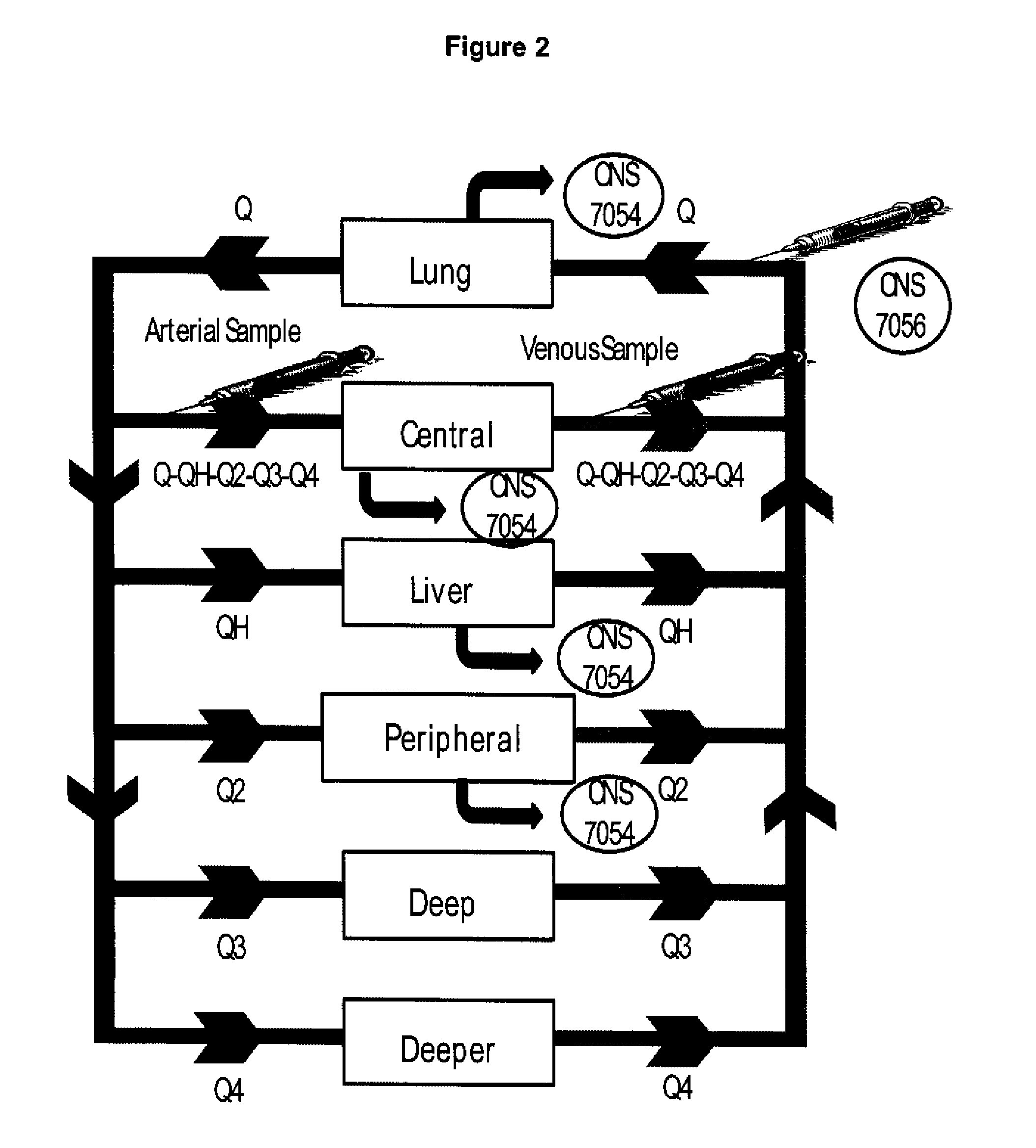Dosing regimen for sedation with CNS 7056 (Remimazolam)
a sedation and dosing regimen technology, applied in the direction of nervous disorders, drug compositions, organic chemistry, etc., can solve the problems of increasing the risk of adverse events, difficulty in finding a suitable dosing regimen, and certain deficiencies or risks in regard to the suitability of the sedation profile and tolerability, and achieve the effect of improving the sedation profil
- Summary
- Abstract
- Description
- Claims
- Application Information
AI Technical Summary
Benefits of technology
Problems solved by technology
Method used
Image
Examples
example 1
[0104]The principal objectives of the analysis were to fit pharmacokinetic and pharmacodynamic (especially Modified Observer's Assessment of Alertness / Sedation (MOAA / S) scores) models to the data obtained from the studies CNS 7056-001 and CNS 7056-002 and use the parameters obtained to simulate the results of different dosing regimens in order to predict an optimal dose regimen for CNS 7056. Secondary objective was to explore the pharmacodynamic interaction between CNS 7056 and fentanyl during Study CNS 7056-002.
Materials and Methods
Study CNS 7056-001
[0105]Pharmacokinetic data were obtained after CNS 7056 had been administered by intravenous infusion over one minute to groups of healthy volunteers at the following doses: 0.01, 0.025, 0.05, 0.075, 0.1, 0.15, 0.2, 0.25 and 0.3 mg / kg. Both arterial (1, 2, 3, 4, 6, 8, 10, 12, 15, 20, 30, 45 minutes and 1, 2, 3, 4 hours post-dose) and venous (2, 3, 4, 6, 8, 12 hours) blood samples containing CNS 7056 and its metabolite, CNS 7054, were ob...
example 2
Phase IIb Study of Remimaozalm Vs. Midazolam in Using Combination Fixed Doses
Study Design
[0148]The Phase IIb trial was a double-blind, randomized, parallel group study examining three dose regimens of Remimazolam (CNS 7056) compared with Midazolam in 160 patients undergoing a colonoscopy. The patients received either one of three different initial doses of Remimazolam or Midazolam followed by “top-ups” (i.e. multiple doses) as required to maintain an adequate sedation level to undergo a standard colonoscopy procedure.
[0149]The study—conducted in multiple sites in the U.S.—was designed to evaluate the safety of Remimazolam and the success of the sedation, the time to peak sedation as well as the time to full recovery and discharge, in comparison to the gold-standard agent, Midazolam. In addition, based on the results of the successfully concluded Phase Ib and IIa studies, this study was designed to further refine the optimal dose regimen before moving into Phase III.
[0150]The followi...
PUM
| Property | Measurement | Unit |
|---|---|---|
| weight | aaaaa | aaaaa |
| weight | aaaaa | aaaaa |
| body weight | aaaaa | aaaaa |
Abstract
Description
Claims
Application Information
 Login to View More
Login to View More - R&D
- Intellectual Property
- Life Sciences
- Materials
- Tech Scout
- Unparalleled Data Quality
- Higher Quality Content
- 60% Fewer Hallucinations
Browse by: Latest US Patents, China's latest patents, Technical Efficacy Thesaurus, Application Domain, Technology Topic, Popular Technical Reports.
© 2025 PatSnap. All rights reserved.Legal|Privacy policy|Modern Slavery Act Transparency Statement|Sitemap|About US| Contact US: help@patsnap.com



